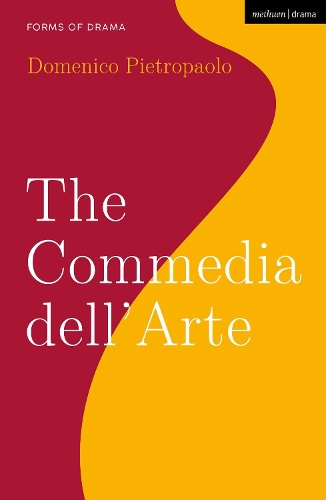
The Commedia dellArte
(Hardback)
Available Formats
Publishing Details
The Commedia dellArte
By (Author) Professor Domenico Pietropaolo
Series edited by Simon Shepherd
Bloomsbury Publishing PLC
Methuen Drama
6th October 2022
United Kingdom
Classifications
Tertiary Education
Non Fiction
Social and cultural history
852.052309
Physical Properties
Hardback
224
Width 129mm, Height 198mm
Description
What were the origins of commedia dellarte and how did it evolve as a dramatic form over time and as it spread from Italy How did its relationship to the ruling ideology of the day change during the Enlightenment What is its legacy today These are just some of the questions addressed in this authoritative overview of the dramatic, ideological and aesthetic form of commedia dellarte. The books 3 sections examine the changing role of performers and playwrights, improvisatory scenarios and scripted performance, and its function as a vehicle for social criticism, to offer readers a clear understanding of commedia dellartes evolution in Renaissance Italy and beyond. This study throws new light on the role of women performers; on the changing ideological discourse of commedia dellarte, which included social reform and, later, conservatism as well as the alienation of ethnic minorities in complicity with its audience; and on its later adaptation into hybrid forms including grotesque dance and the giullarata typified by the work of Dario Fo.
Reviews
In this fascinating study, Domenico Pietropaolo enriches and deepens our knowledge of the commedia dellarte throughout its early history and golden age in Italy (1560 to 1630s). His highly readable text engages the reader with its masterful weaving of theory and practice as he carefully lays out the dramaturgical and aesthetic features which defined the commedia dellarte during its historical evolution in both north and south Italy, and beyond. Building on this comprehensive foundation, Pietropaolo offers brilliant readings of 18th-century play texts and performances by such genius playwrights as Goldoni and Gozzi whose opposing reforms teased out the complex relationships between improvised and scripted forms. The final section pays tribute to the commedia dellartes enduring legacy by referencing some of its adapted dramatic forms, such as Lambranzis grotesque dance, the Neapolitan Pulcinellata, the English Harlequinade, and the Opera. The inclusion of key 20th-century performers and companies dedicated to keeping arte traditions alive attest to its ongoing presence. Pietropaolos The Commedia dellArte is essential reading for theatre scholars and theatre lovers alike. * Rosalind Kerr, University of Alberta, Canada *
Author Bio
Domenico Pietropaolo is Professor of Italian and Drama at the University of Toronto, Canada. His publications include Pragmatics and Semiotics of Stage Improvisation (Methuen Drama, 2016), The Baroque Libretto (co-authored with M.A. Parker, 2011), and, as editor, The Science of Buffoonery: Theory and History of the Commedia dell'Arte (1989).
